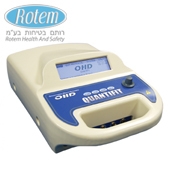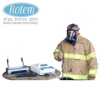QUANTIFIT Face Fit Testing
Quantitative respirator fit testing is a practice that has existed since the late 1960’s. While there have been several ways in which to perform a respirator fit test, there were never any scientific studies to prove that these methods actually worked. These technologies have simply been “accepted” because they were the only way to do quantitative fit testing.
In 1992, the idea of Controlled Negative Pressure (CNP) was implemented as a whole new approach to fit testing. This revolutionary way to perform a good respirator fit measured respirator leakage in a quick and accurate way - which is fundamental to measuring respirator fit.
CNP technology was accepted by OSHA (the Occupational Safety and Health Administration in the United States) in 1998, and has quickly been adopted by the industry to be the quickest and most accurate way to perform respirator fit testing. It has become to be regarded as the gold standard in respirator fit testing.
How does the Quantifit work during a fit test?
The respirator inlets are capped with Quantifit test adapter(s).
1. The inhalation valves are removed from the mask or propped open.
2. The user dons the mask in accordance with normal practice and holds his or her breath for no more than ten seconds.
3. During this period, the Quantifit unit establishes and maintains a slight vacuum, or controlled negative pressure, inside the mask.
4. As the respirator inlets are sealed, all sources of leakage into the mask are through the face-to-facepiece seal.
5. The volume of air drawn out of the mask by the Quantifit during this short period of time is equal to the leak rate into the mask through the face-to-facepiece seal.



.png)


